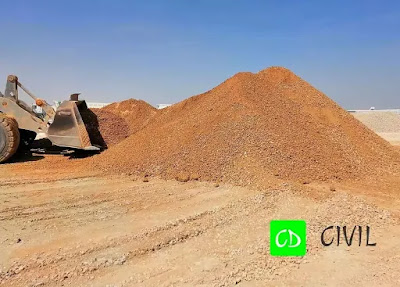TYPICAL INTERVIEW QUESTIONS AND ANSWERS FOR CIVIL QUALITY INSPECTOR | CIVIL SITE ENGINEER
Basic but important interview questions and answers for Civil Quality Control Inspector. These questions are asked commonly in interviews for Civil Quality Control Inspector.
Technical Questions Asked by Interviewer to a Civil Engineer in Interview
CHAPTER 1 – BACKFILLING AND EARTHWORK
Que 1 – What are the most important elements of soil classification?
Ans 1 – Types of soil, Gradation, and Atterberg limits. The inspector should have a general idea of how these limits (liquid limit, Plastic, and; Plasticity Index) correlate with selecting approved Select Fill.
Que 2 – What is “CBR”?
Ans 2 – California Bearing Ratio. It is a laboratory value that helps determine soil bearing capacity and in classifying soil. It is a design parameter, however, it is a requirement by our standards to verify and check. Not knowing what it indicates the inspector has poor soil knowledge and experience.
Que 3 – What is the maximum depth of a regular fill layer (lift) prior to compaction?
Ans 3 – 200mm
Que 4 – What is the maximum depth of a fill layer (lift) when manual equipment is used for compaction?
Ans 4 – 100mm
Que 5 What are the project condition and factors that control compaction?
Ans 5 a. Proper Moisture Content.
b. Compaction Equipment used and the number of rolls.
c. Types of Soil.
d. Confinement of soil (for sand) and stepping of layers of marl and select fill.
b. Compaction Equipment used and the number of rolls.
c. Types of Soil.
d. Confinement of soil (for sand) and stepping of layers of marl and select fill.
Que 6 – What are the three types of laboratory soil density tests? And What are the minimum required density values for each of the tests mentioned above?
Ans 6 – a. Proctor 95 % b. Modified proctor c. Relative (for sand) 70%
(adsbygoogle = window.adsbygoogle || []).push({});
Que 7 – What are the main points which you will watch where the earthwork is in progress?
Ans 7 – 1 – Material is not oversized (not more than 8cm)
2 – Not over 30cm per layer if the heavy mechanical roller is used
3 – Not exceeding optimum moisture content or less ( 2% to 3%)
4 – Not rubberizing or foaming
5 – While grading, see to it that material is not segregated.
6 – Number of passes of rollers during compaction, and weight of compactor. (8 passes minimum with ½ overlap)
7 – Smoothness of the finished surface of the subgrade. The contractor should use a 4-m straight edge. The tolerance limit is 25mm for subgrade, 12mm for sub-base, 6mm for the aggregate base course)
Que 8 – What is the thickness of each layer allowed for an embankment and for subgrade?
Ans 8 – For embankment 30cm thick or as otherwise specified
For subgrade, Each cut 30cm to be laid in two layers (15 X 15)
The earth fills 40 cm to be laid in two layers (20 X 20) if possible to attain the required 100%
compaction.
compaction.
Rock cut 20cm in one layer
Que 9 – What is the procedure for starting the first layer of earthwork if the total height of the embankment is less than 75cm?
Ans 9 – Grabbing and scarifying the area till 15cm watering it. Removing any unsuitable and foreign material then compact it.
Que 10 – Suppose the first layer of sub-grade was compacted and tested one month back, would you allow the laying of the second layer of sub-grade on this work? If not, What will you require the contractor to do?
Ans 10 – No, the contractor should clean, spray water, and re-compact until 100% compaction is attained.
Que 11 – If you find the thickness of subgrade 3cm less, how would you allow the contractor to complete the deficient thickness?
Ans 11 – Trim up to 12cm and add the 3cm layer to make it 15cm, then re-compact.
Que 12 – What is the percent compaction required for natural ground embankment, subgrade, and wearing course?
Ans 12 – For excavated surface proof rolling required and 90% compaction
For Subgrade 90 % compaction required of Maximum dry density
For Sub-base 95 % compaction required of Maximum dry density
Que 13 – What are the tests you run to determine the suitability of subgrade material?
Ans 13 – a. CBR b. Soil Classification c. Liquid limits d. Plastic limit e.Sieve Analysis
Que 14 – What are the suitable tests to find out the in-place dry density and moisture content on compacted fill?
Ans 14 – a. Sand-Cone method.
b. Nuclear method
c. Rubber balloon method
d. Drive-cylinder method
(adsbygoogle = window.adsbygoogle || []).push({});
Que 15 – What shall be the frequency for the test for field dry density testing?
Ans 15 – Unless otherwise specified in the contract documents, the field density testing shall, as a minimum, be performed at the following frequencies.
Ans 15 – Unless otherwise specified in the contract documents, the field density testing shall, as a minimum, be performed at the following frequencies.
1. Structural fill under foundations and building slab – One test every 1000 Square Feet (90 square m) of each lift
2. Tank Foundation – for tank foundation a minimum of 3 field density test for every 5000 square feet (460 square meters) of each compacted layer
3. Structural fill under roadways, railroads, are pavement and parking areas – one test every 2000 square feet (180 square meters) of each lift.
4. Road base and sub base – one test every 2000 square feet (180 square meters) of each lift.
Backfill of the trench (for utility lines or foundations) – one test for every 50 linear feet (15 m) of each lift was directed by the company.
5. General Fill – one test minimum every 5000 square feet (460 square meters) of each lift.
6. If tests show inconsistent or inadequate results, Company is to be consulates regarding remedial actions.
7. And as a minimum, one, in-place moisture content and one density test shall be performed on every individual layer of ill, per work area.
MADE EASY NOTES | TOP BOOKS TO CRACK GOVT EXAM JE | AE | PSU | SSC
Well oriented Questions and Answers Topic wise
PLEASE COMMENT BELOW IF YOU LIKE THIS POST AND IF ANY DOUBT COMMENT
DONT FORGET TO SHARE IT WITH YOUR FRIENDS
THANKS
(adsbygoogle = window.adsbygoogle || []).push({});



Leave a comment